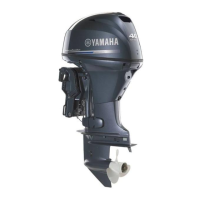J
Jennifer KingAug 14, 2025
How to fix irregular idling or stalling in my Yamaha 40B Outboard Motor?
- JJuan RhodesAug 14, 2025
If your Yamaha Outboard Motor idles irregularly or stalls, here's what you can check: * Inspect and replace fouled or incorrect spark plugs. * Check for obstructions in the fuel system. * Replace contaminated or stale fuel. * Clean or replace the fuel filter. * Make sure the air vent screw on the fuel tank is open, the choke knob is in home position, and the motor angle is at the normal operating position. * Also, ensure the fuel joint connection is correct and the battery lead is securely connected. If these steps don't resolve the issue, have a Yamaha dealer check the ignition parts, warning system, spark plug gap, ignition wiring, engine oil, thermostat, carburetor adjustments, or fuel pump.




